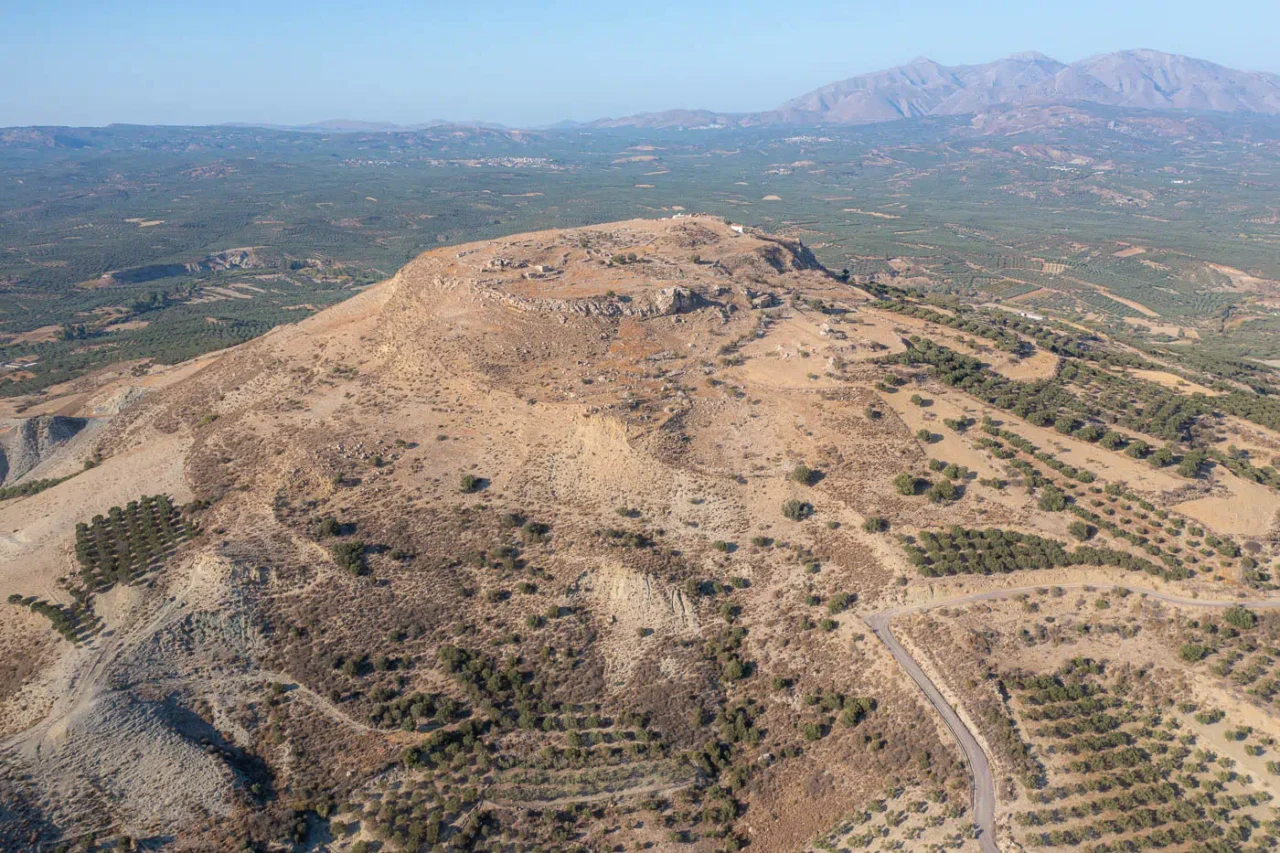
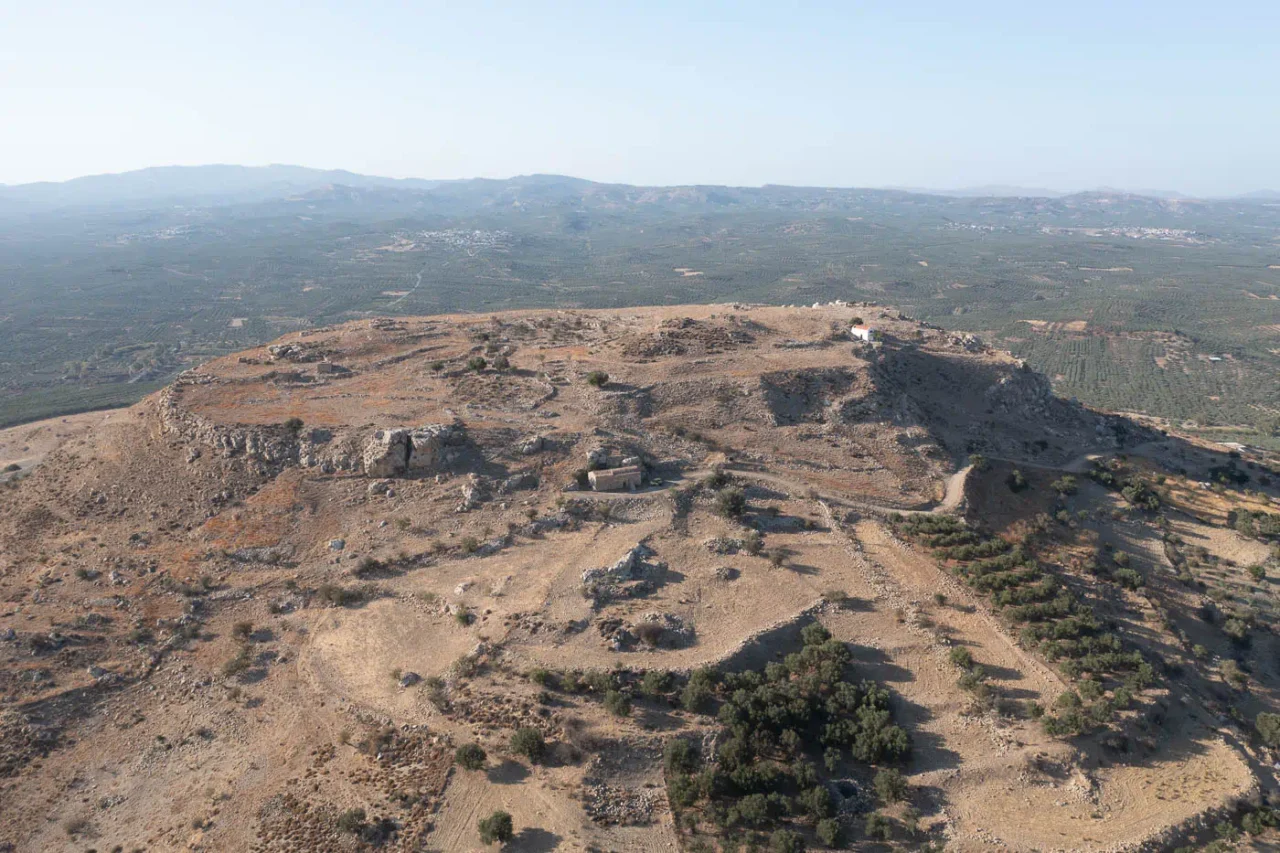
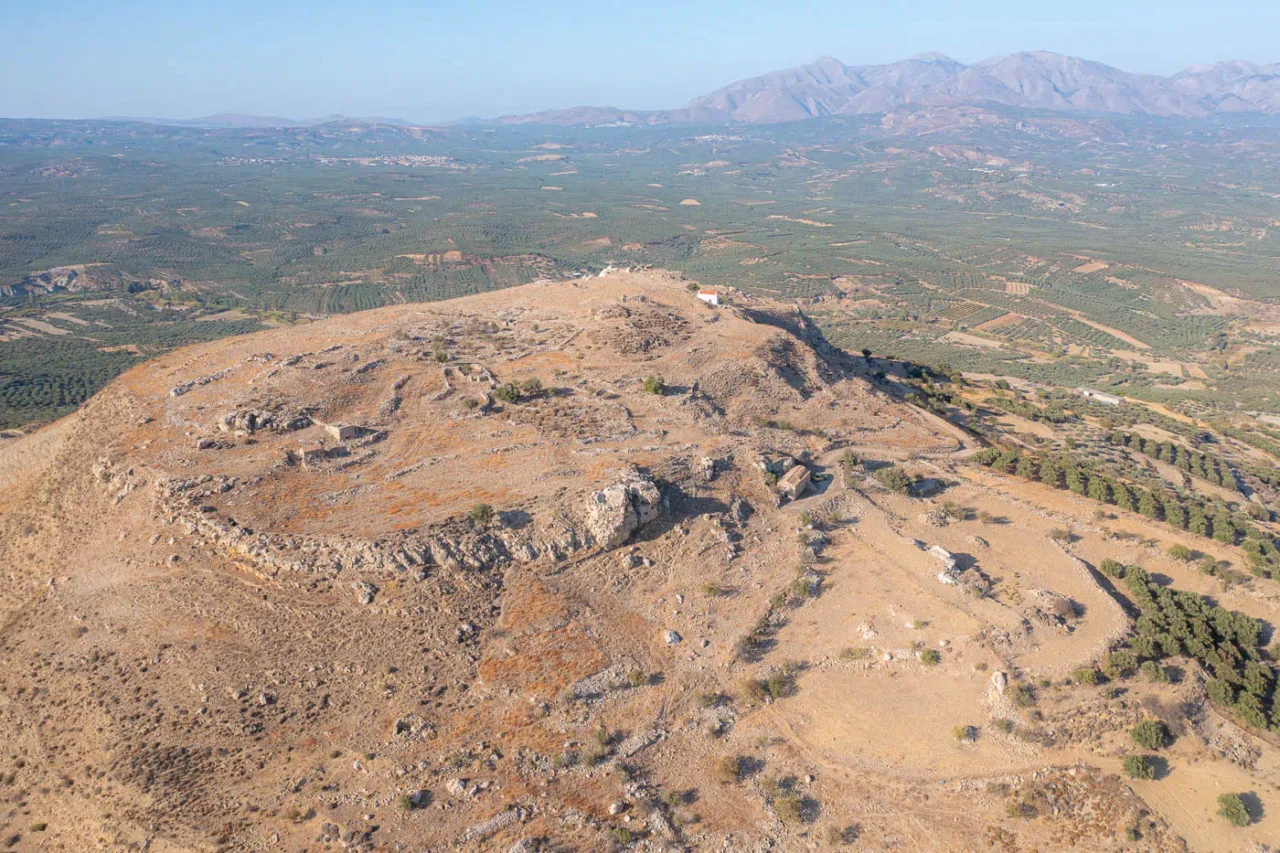
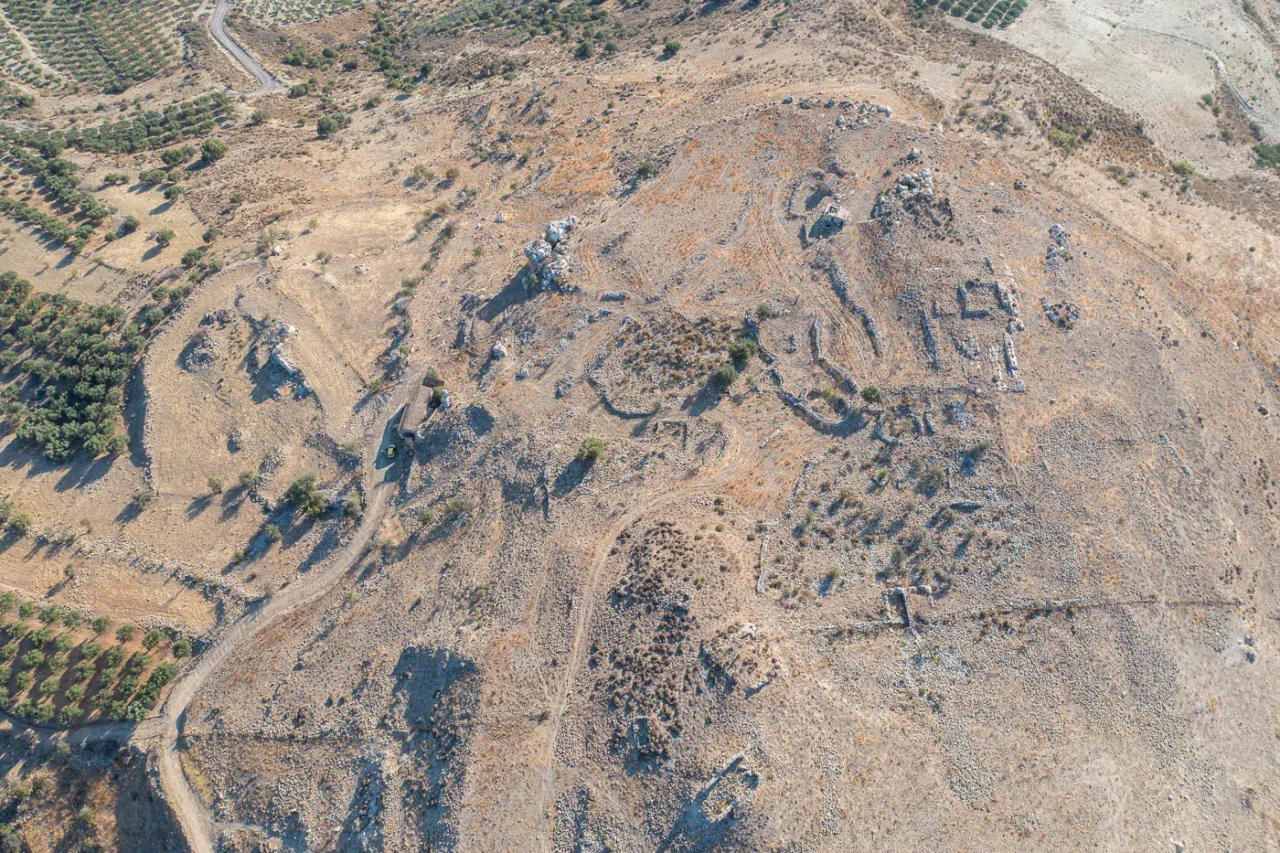
The Kastello Kastelianon or Rizokastro (also known as Belvedere) was situated on an isolated hill named Kastello. The only access point to the hilltop was from the southeastern side, near the villages of Ano and Kato Kasteliana. The hilltop commanded a view of the eastern end of the Messara Plain.
History
The fortress was initially built by the Byzantines around the 10th century and was referred to as Rizokastro. It was later repaired and expanded between 1206 and 1210 by the Genoese pirate Enrico Pescatore. The ancient city of Priansos once occupied this location, and materials from its ruins were reused in the fortress’s construction. The name “Belvedere,” meaning “beautiful view,” likely originates from the Venetians and reflects the hilltop’s panoramic vistas.
Following the Venetian conquest of Crete, the fortress was further repaired and augmented with cisterns, barracks, and administrative buildings for the Castellania. The Castellania of Belvedere, also known as Rizou, Rizokastro, or Chrysokastro, encompassed the present-day province of Viannos and a part of Monofatsio.
During the early centuries of Venetian rule, when local uprisings were frequent, the Venetians sought refuge within the fortress. Small settlements, or “bourg,” sprang up near the fortress, eventually evolving into the villages of Kasteliana. As rebellions subsided, the fortress’s strategic importance diminished, leading to its abandonment.
Within the fortress, six churches were built, of which remnants of five remain. The only one still in use today is the Church of the Dormition of the Theotokos. Near this church lies the “Cave of the Arab,” which once served as a shelter for the local population.
Historical periods
- Byzantine Period (around the 10th century): The fortress was initially constructed during the Byzantine era, likely around the 10th century. The site was previously occupied by the ancient city of Priansos, and materials from its ruins were likely reused in the fortress’s construction. The original name “Rizokastro” also suggests a Byzantine origin.
- Genoese Period (1206-1210): The Genoese pirate Enrico Pescatore repaired and expanded the fortress during his brief occupation of Crete.
- Venetian Period (after 1211): The Venetians further modified the fortress, adding cisterns, barracks, and administrative buildings to serve as the seat of the Castellania of Belvedere. The name “Belvedere” is attributed to the Venetians. The fortress remained active during the early Venetian period, providing refuge during local uprisings.
- Ottoman Period (after 1669): The fortress gradually lost its importance and was eventually abandoned, likely during the Ottoman period.
The fortress’s long history of occupation and modifications reflects its strategic importance in controlling the Messara Plain and the surrounding region.
Fortifications: Key Points
- Construction Period: 10th century (Byzantine), with later modifications by the Genoese and Venetians
- Location: Kastello Hill, near Ano and Kato Kasteliana villages, Heraklion Prefecture
- Historical Significance: Served as a strategic outpost, castellania seat, and refuge during uprisings
- Current Status: In ruins, with some structures, including the Church of the Dormition of the Theotokos, still standing.
References
- Cretan Beaches
-
Nikos M. Gigourtakis (2004), Byzantine Fortifications in Crete during the Second Byzantine Period (961-1204), Master’s Thesis, Interdepartmental Postgraduate Program in Byzantine Studies, Department of History and Archaeology, University of Crete.













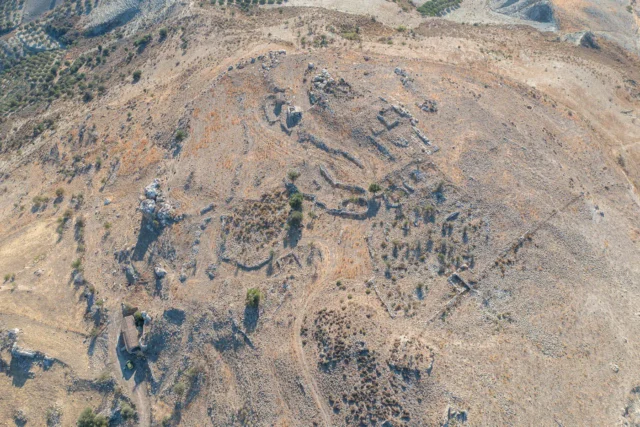







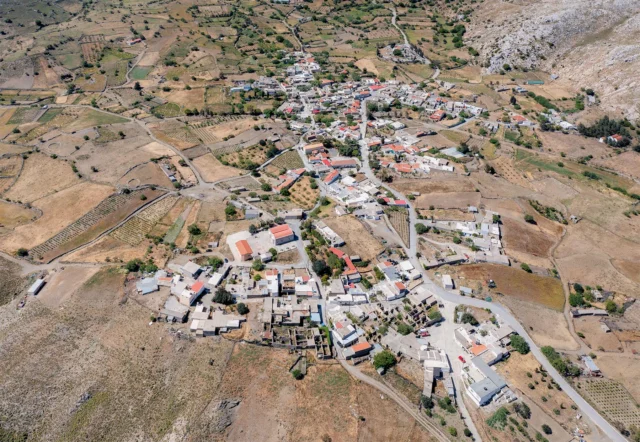
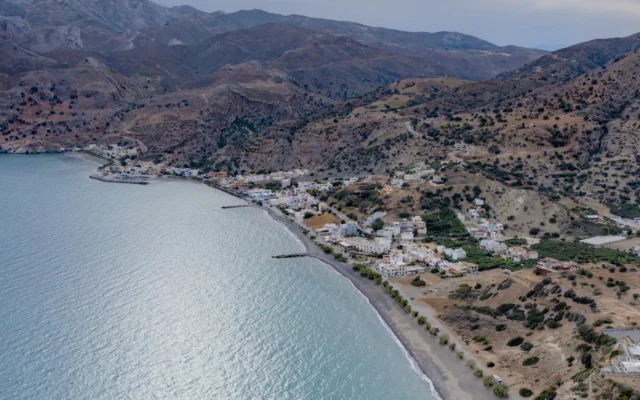
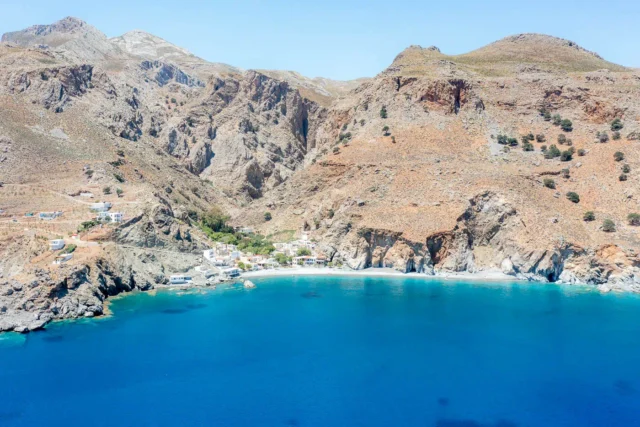

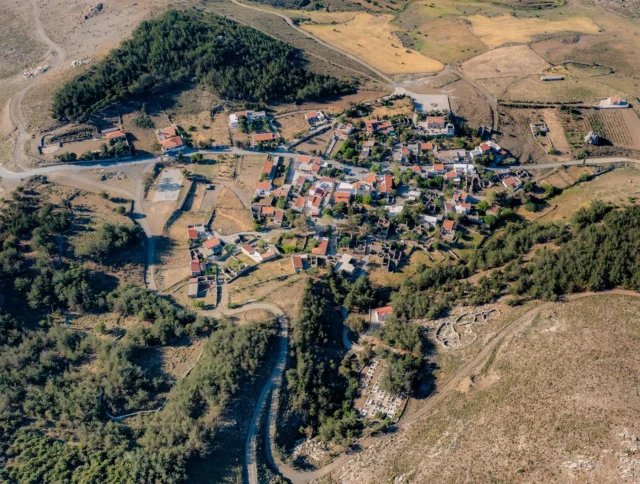

There are no comments yet.